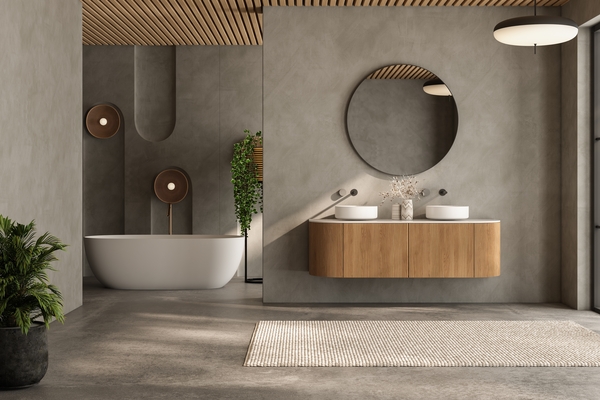In busy homes in Michigan, bathrooms often face multiple challenges that can significantly affect their functionality, comfort, and longevity. Given Michigan’s distinct climate, older housing stock, and the high usage rates in larger families or households with multiple residents, bathroom issues tend to be more pronounced and varied. Understanding where bathrooms most commonly fail in these busy Michigan homes can help homeowners identify problem areas early and take proper maintenance or renovation actions.
Common Problem Areas in Busy Michigan Bathrooms
Plumbing Failures and Pipe Issues
- Corroded or Defective Pipes: Many older homes still have galvanized steel or lead pipes, which corrode over time, restricting water flow and causing leaks or even contamination. Corrosion can be worse in Michigan due to the seasonal temperature fluctuations and water quality factors.
- Pipe Bellies: As the ground shifts due to freeze-thaw cycles and settling, pipes can bend downward, creating low spots or ‘bellies’ where sediment collects, leading to blockages and backups.
- Frozen Pipes: Michigan’s harsh winters cause pipes to freeze and possibly burst if not properly insulated or heated, resulting in costly repairs and water damage.
- Outdated and Faulty Repairs: Many older homes have had multiple plumbing repairs conducted over the years, some by unlicensed individuals, which can lead to ongoing leaks and system failures.
Space Constraints and Layout Challenges
- Cramped Layouts: Small bathrooms can become overcrowded with multiple users, causing constant wear on fixtures and surfaces.
- Inadequate Storage: Lack of proper cabinetry or shelving leads to clutter, which can increase humidity and mold risks.
- Inefficient Plumbing Layout: Older designs or poor remodeling jobs can lead to excessive running of water lines through unheated spaces, increasing energy use and risk of freezing.
Ventilation and Moisture Problems
- Mold and Mildew Growth: With continual use and inadequate airflow, moisture accumulates on walls, ceilings, and corners, causing mold that damages paint, drywall, and wood, and poses health risks.
- Vent Fan Failures: Many bathrooms have fans that are either too weak for the space or malfunction due to age, leading to persistent dampness.
- Condensation Damage: Windows, mirrors, and metal fixtures can suffer from condensation buildup that eventually damages surfaces and finishes.
Wear and Tear on Fixtures and Surfaces
- Toilets, Faucets, and Showers: Older or low-quality fixtures become prone to leaking, clogging, or constant repairs.
- Grout and Tile Decay: Frequent water exposure wears grout down, allowing water infiltration that damages sub-floors and walls.
- Countertops and Cabinets: Surfaces near sinks and tubs often suffer water damage, warping, or staining without proper sealing and upkeep.
Safety Hazards
- Slippery Floors: Water splashing combined with smooth tile or vinyl surfaces increases fall risk.
- Lack of Grab Bars or Support: Older bathrooms often lack safety features to prevent accidents.
- Sharp Edges and Hard Surfaces: Fixtures and cabinetry with unforgiving edges can cause injuries.
By understanding where and why bathrooms most often fail in busy Michigan homes, homeowners can take proactive steps to maintain comfort, safety, and value in one of the most used spaces in their house. Proper maintenance, timely repairs, and thoughtful remodeling tailored to Michigan’s unique conditions ensure bathrooms remain reliable hubs of daily life.

